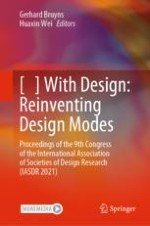2022 | OriginalPaper | Buchkapitel
The Design of Rehabilitation Device for Upper Limb After Stroke Using an Integrated Design Process
verfasst von : Jaehan Park, Muhammad Tufail, HaeBin Lee, KwanMyung Kim
Erschienen in: [ ] With Design: Reinventing Design Modes
Verlag: Springer Nature Singapore
Aktivieren Sie unsere intelligente Suche, um passende Fachinhalte oder Patente zu finden.
Wählen Sie Textabschnitte aus um mit Künstlicher Intelligenz passenden Patente zu finden. powered by
Markieren Sie Textabschnitte, um KI-gestützt weitere passende Inhalte zu finden. powered by
